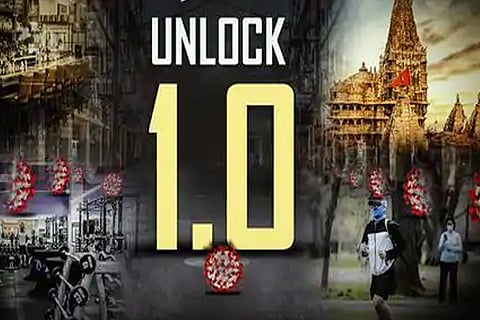

Chennai
With this extension, the language has officially altered – Lockdown 5.0 has morphed into Unlock 1. The change in the idiom is important inasmuch as it is almost certainly aimed at infusing some confidence in an economy, which registered an 11-year low in GDP growth for the fourth quarter of last year.
As before, the recent package is a graded easing of restrictions. But this one goes a reasonably long way in restoring some semblance of normal life in areas outside containment zones. But it is important to remember that the path to such normalcy is potentially extremely slippery. Apart from the fact that different States have varying definitions for what constitutes a containment zone, there is the question of a lack of detail over protocols to be strictly observed as things open up. These are likely to be issued soon, but it is imperative that a strict regimen is laid down, as well as enforced, when such things as restaurants and malls open for business on June 8.
More worrying is the decision to open places of religious worship in Phase 1. Given the crowds at temples and other places of worship in this country, it is difficult to see how even bare social distancing norms can be observed, let alone enforced. It is true that there is an informal economy around places of worship, but it is not clear if the Centre’s decision was based on livelihood concerns or pure religious sentiment. While there is no denying that such sentiment is extremely strong, it is important to stress that nothing should be done to undermine the health of the people and the nation.
It is heartening that Tamil Nadu, which has the second-highest COVID-19 incidence in the country, has decided that many of the activities sanctioned by the Centre will continue to remain prohibited until the end of June. These include places of worship, religious congregations, travel to the hills, shopping malls as well as all social, political, cultural, and entertainment functions. There are some marginal relaxations in Chennai with respect to restaurants, taxis, and autorickshaw rentals, and barbershops, and saloons, but overall, the thrust is clearly against being too lax.
The Centre has left some of the more tricky issues – such as the opening of educational institutions – for later stages. While such things as meetings in auditoriums and cinema shows can wait, the critical issue is travel. The real factor in retrieving a substantial amount of normalcy is of course public transport, whether by road, rail, or air. Any hope of economic recovery, however small, depends on this. The Centre and the States will need to find sustainable ways of getting the movement of people and goods within cities, between districts, and between States back on track. More than anything else, mobility is the oil by which the economic engine runs.
Visit news.dtnext.in to explore our interactive epaper!
Download the DT Next app for more exciting features!
Click here for iOS
Click here for Android